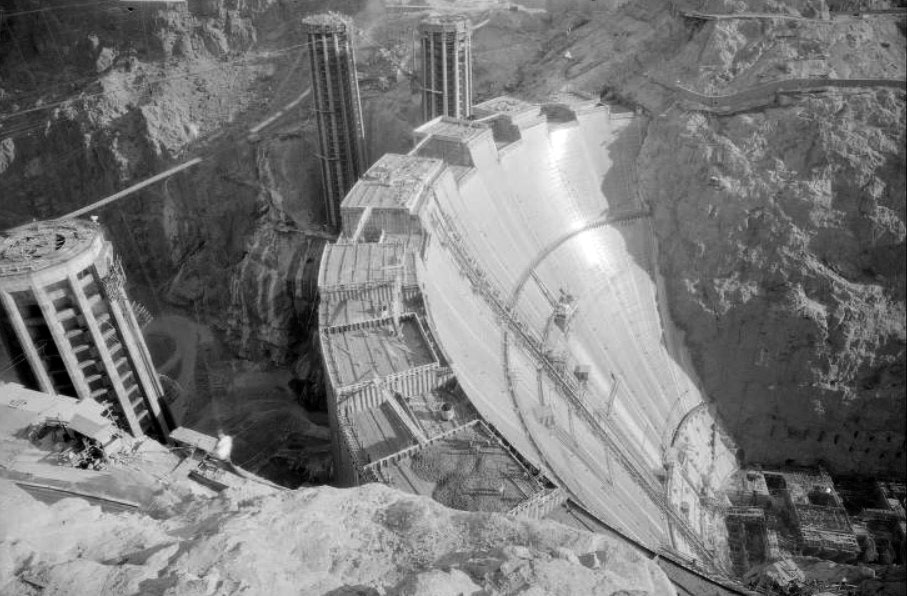The need for a more conventional source of power and flood control was greatly needed and congress was willing to take on the demand. This need for extra power within the near by states made congress offer up the decision to make a dam in the Colorado river between California and Nevada. By having this dam, they would be able to incorporate hydro electric power within the nearby areas. Therefore, Congress instructed the start of the Hoover dam which took from 1931-1936 to be completed. Hundreds of lives were lost in the construction of the dam and the workers knew the risks. The construction took place during the great depression so many people were willing to risk their lives for some money for their families. The company that won the bid and took on the challenge was the Six Companies Inc. The Six Companies Inc had worked throughout the years to create this monster of a structure which was the biggest of its time with a maximum water depth of 590 feet. The company finished and turned the dam and turned over to the government two years before they were suppose to finish. Once completed in 1936, Roosevelt named it the Hoover dam which brought up great controversy considering Hoovers presidency. With multiple purposes of flood control, power, water storage, regulation and recreation, the Hoover dam has greatly benefited the surrounding areas.






I really like how you thoroughly described all of the surrounding aspects of the Hoover Dam construction and what purpose it has continued to serve throughout the past eighty years. Your description of the process of construction and the economic benefits of it along with its social stresses was excellent, but it is also important to address why in particular the Hoover Dam was constructed in the rural west along Lake Mead and why the name was chosen to continue the legacy of former president Herbert Hoover. That way, one will know some more of the background history to fill them in upon the current information provided in the blog. To continue discussing this topic, a very detailed article includes that of http://www.history.com/topics/hoover-dam.
ReplyDeleteInteresting post about the Hoover Dam. I liked how you gave background on not only the construction of it, but also the uses and benefits of the structure. Although you portray the dam as being beneficial to mankind, I still wonder how it affects the environment. Franklin Roosevelt may have approved of it, but it makes me wonder how Theodore Roosevelt, a great advocate for environmental conservation, would have reacted to it. It would be interesting to compare the pros and cons of the Hoover Dam, for humans often take action when they know it benefits themselves, but others (both the environment and the organisms in the environment) are often left out of consideration. To learn more about the benefits and detriments of the Hoover Dam, go to: http://ca.pbslearningmedia.org/resource/phy03.sci.phys.energy.hooverelec/hoover-dam-and-hydroelectric-power/
ReplyDeleteYou did a great job explaining the history of Hoover dam. I find it very interesting that such a magnificent was named after someone with such a bad reputation. The country as a whole completely hated hoover by the end of his term as he dug a deep hole into the Great Depression by passing things such as the Hawley-Smoot Act. Hoover practically became the ultimate symbol of the economic suffering as people began naming things after him ironically such as Hoovervilles (shanty towns) and a Hoover flag (an empty pocket). I wonder what FDR's intentions where by naming the Dam Hoover. Did he want to give his predecessor a legacy?
ReplyDeletesources:
Hoover symbols: https://www.archives.gov/publications/prologue/2004/summer/hoover-2.html
Hawley Smoot Act:
https://www.britannica.com/topic/Smoot-Hawley-Tariff-Act